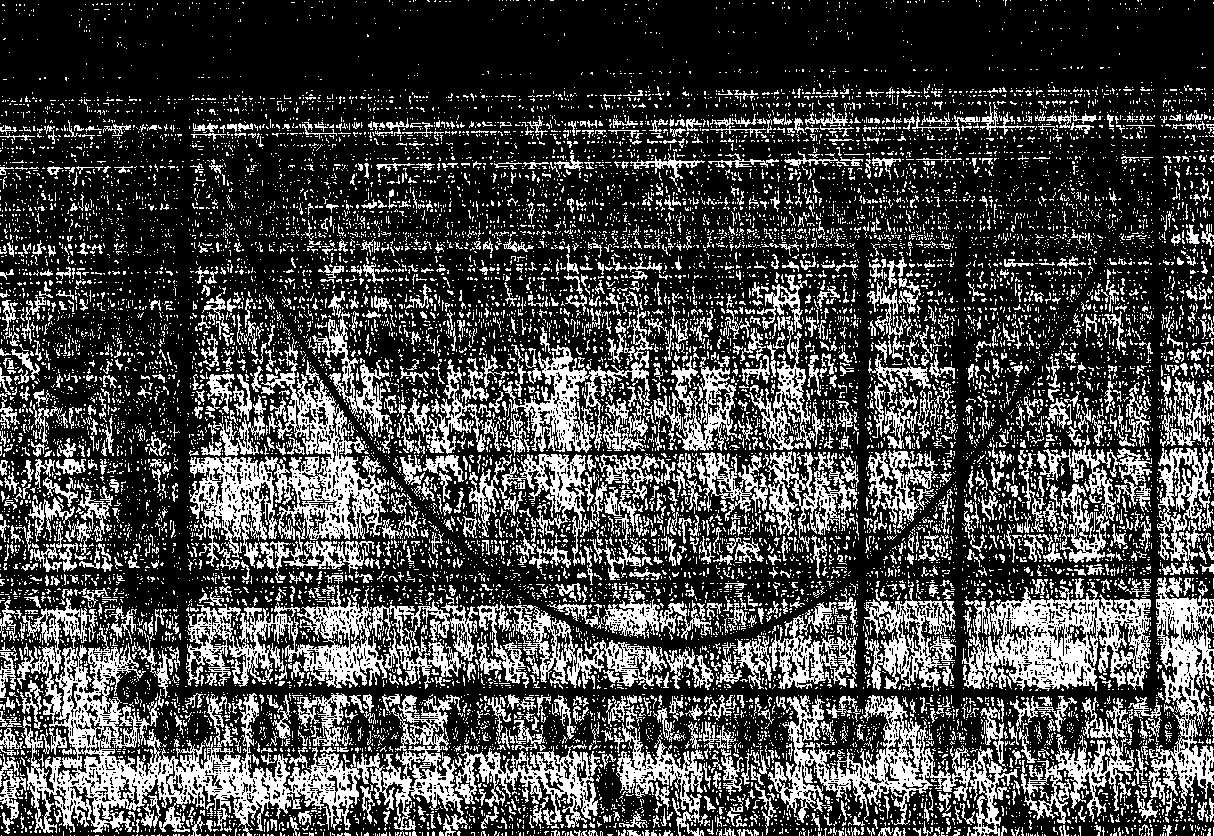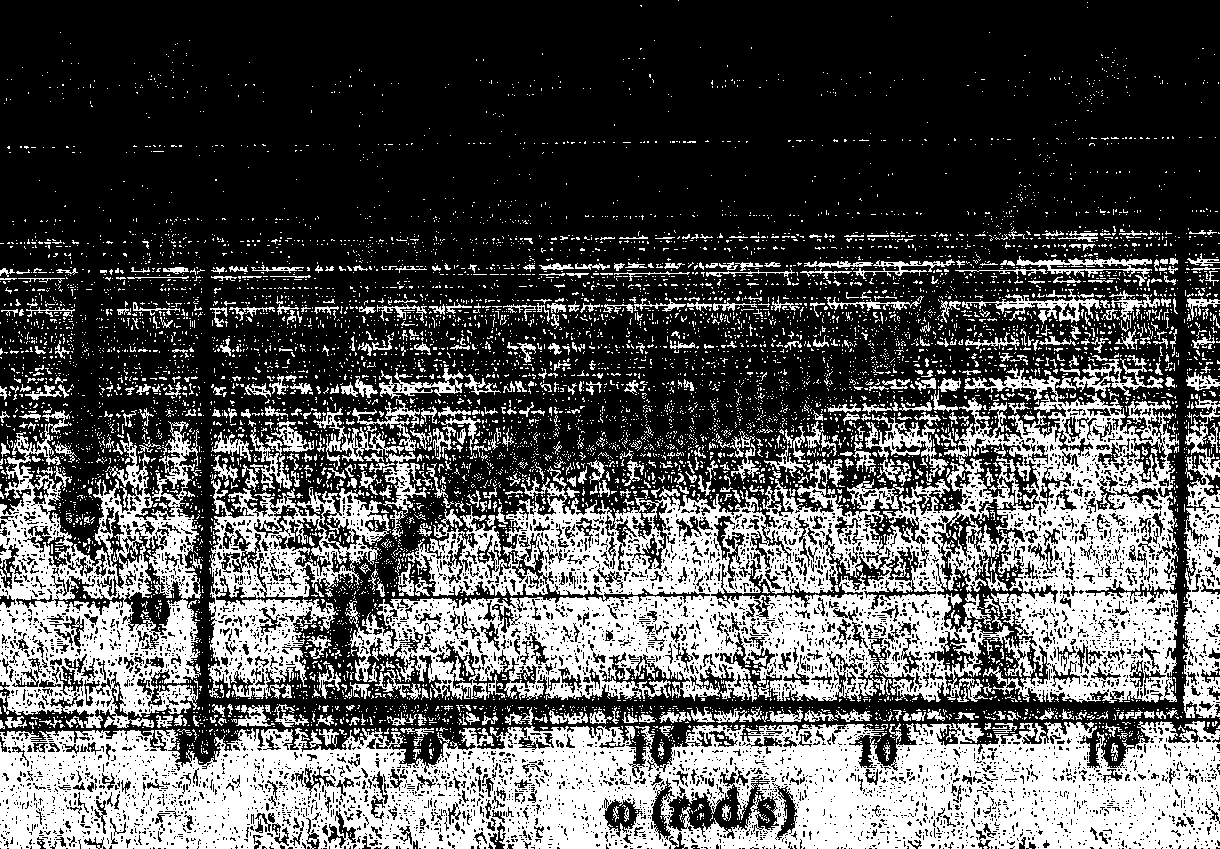Determination method for interfacial tension of phase-separated polymer blend
A technology of blending polymers and measurement methods, which is applied in the direction of surface tension analysis, etc., can solve the problems of unsystematic research and reporting of interfacial tension measurement, and achieve the effect of wide application range and simple sample preparation method
- Summary
- Abstract
- Description
- Claims
- Application Information
AI Technical Summary
Problems solved by technology
Method used
Image
Examples
Embodiment 1
[0046] Determination of the interfacial tension of phase-separated polybutadiene (PB) / polyisoprene (PI) (30wt / 70wt) blend polymers at 110℃
[0047] (1) Preparation of PB / PI blend polymer.
[0048] PB and PI are provided by Yanshan Branch of Sinopec Beijing Research Institute of Chemical Industry. Its basic parameters are as follows:
[0049]
[0050] PB and PI were dissolved in dichloromethane to prepare a polymer solution with a weight fraction of 3.22%, wherein the weight ratio of PB and PI was 30:70. The above polymer solution was filtered using a Millpore filter membrane with a pore size of 0.45 μm. The filtrate was stirred with a stirrer at room temperature at a stirring rate of 500 rpm. After the dichloromethane solvent in the filtrate was naturally volatilized, it was transferred to a vacuum oven to continue to remove the remaining small amount of solvent. The oven temperature was set to 35°C, and it stayed in the vacuum oven for 1-3 days until the sample had a cons...
Embodiment 2
[0059] Determination of interfacial tension of phase-separated PB / PI (20wt / 80wt) blend polymers at 110℃
[0060] (1) Preparation of PB / PI (20wt / 80wt) blend polymer.
[0061] The polymers PB and PI used and the preparation of the polymer blend were the same as in Example 1.
[0062] (2) Two-phase structure and zero shear viscosity of PB / PI (20wt / 80wt) blend polymer at 110℃
[0063] The two-phase structure of PB / PI (20wt / 80wt) blend polymer annealed at 110℃ for 180min was characterized by Olympus BX51 phase contrast microscope with Linkam LTS350 temperature-controlled heating stage and Olympus C-5050ZOOM digital camera image acquisition system. The results are as follows Figure 5 shown. The bright spherical droplets in the figure are the PB-rich phase, which constitutes the dispersed phase; the continuous phase is the dark-colored PI-rich phase. right Figure 5 Using Image J (NIH) image processing software, the volume-averaged droplet radius after annealing for 180 min was ...
Embodiment 3
[0067] Determination of the interfacial tension of styrene-maleic anhydride copolymer (SMA) / polymethyl methacrylate (PMMA) (15wt / 85wt) blend polymer at 220℃
[0068] (1) Preparation of SMA / PMMA blend polymer.
[0069] The mole fraction of maleic anhydride in SMA is 16%, produced by Nanjing Yinxin Chemical Co., Ltd.; PMMA is produced by BASF. The basic parameters of the two samples are as follows:
[0070]
[0071]
[0072] The SMA and PMMA samples were dried in a vacuum oven at 85°C for 12 hours before mechanical blending. The SMA and PMMA were uniformly mixed at a weight ratio of 15:85, and then added to a pre-heated HaakePolylab OS internal mixer for blending. The blending temperature was 180° C. and the rotational speed was 50 rpm. The mixing process continued until the rheometer torque no longer changed. The polymer blend obtained above was hot-pressed at 180° C. for 60 min, and finally a disk-shaped sample with a diameter of 25 mm and a thickness of 1.5 mm was pr...
PUM
| Property | Measurement | Unit |
|---|---|---|
| Radius | aaaaa | aaaaa |
| Viscosity | aaaaa | aaaaa |
| Distribution index | aaaaa | aaaaa |
Abstract
Description
Claims
Application Information
 Login to View More
Login to View More - R&D
- Intellectual Property
- Life Sciences
- Materials
- Tech Scout
- Unparalleled Data Quality
- Higher Quality Content
- 60% Fewer Hallucinations
Browse by: Latest US Patents, China's latest patents, Technical Efficacy Thesaurus, Application Domain, Technology Topic, Popular Technical Reports.
© 2025 PatSnap. All rights reserved.Legal|Privacy policy|Modern Slavery Act Transparency Statement|Sitemap|About US| Contact US: help@patsnap.com



